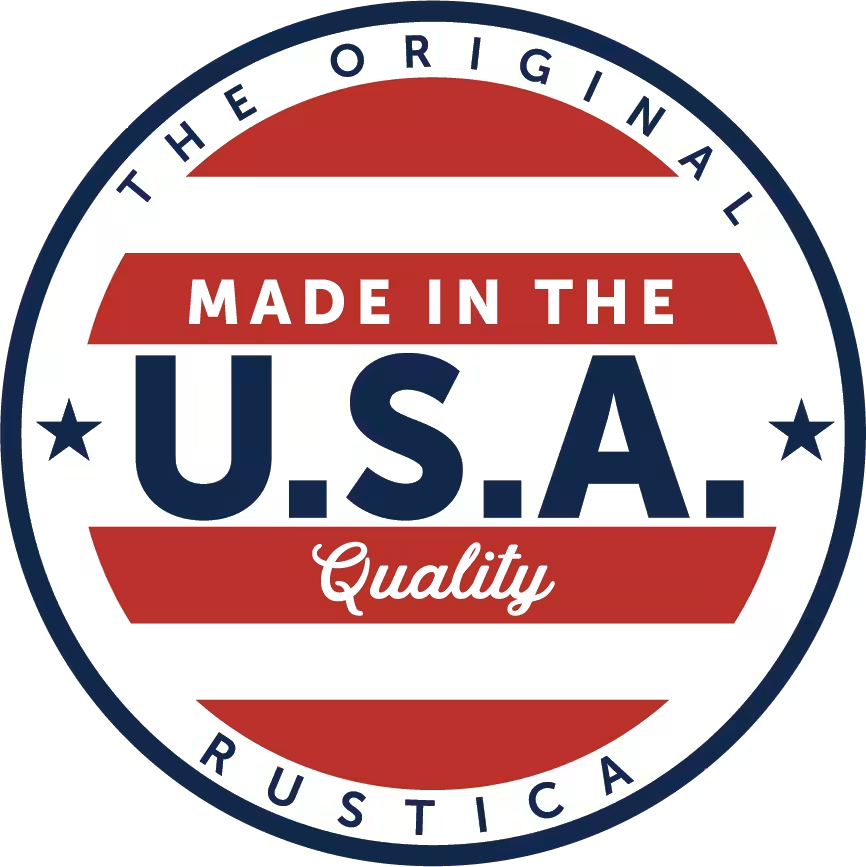Parts of a Window
- Frame
- Glass Pane
- Head
- Sash
- Rail
- Jamb
- Grille / Muntin Bar
- Casing
- Lift
- Sill
- Stool
- Apron
- Jambliner
- Mullion
- Balance
- Sash Lock
- Lock Handle
- Operator
- Weatherstrip
- Fixed Pane
- Screen
- Weep Hole
- Casement
- Stile
- Transom
- Fanlight
- Hardware
- Argon
- Drip Cap
What are the Parts of a Window?
There are many parts that make up a window, though not every type of window will have every part. Still, it’s a good idea to know these terms when going into the window buying process:1. Frame
A window frame is the main structure that encases the window. It consists of the window head, sill, and jambs. Window frames are made with different materials, such as wood, vinyl, metal, or fiberglass. When you see phrases such as metal windows, the metal refers to the material of the window frame.2. Glass Pane
The glass pane is the main glass portion within a window frame, also referred to as the window pane. Modern windows usually hold two or more glass panes to increase energy efficiency.3. Head
The window head is the top horizontal part of the window frame. It sits opposite the sill.4. Sash
The window sash is the part of the frame that encases the glass and may open up or down. In other words, it’s the moveable part of a window. Single and double hung window styles have two sashes: an upper sash and a lower sash. With a double hung window, the upper and lower window sash can open, while only the lower sash can open with a single-hung window. A window sash can hold one or more panes of glass.5. Rail
The rails are the horizontal parts of a window sash, and it’s the window part that divides the top section and lower section of a single or double hung window. The rail is often simply referred to as the middle horizontal bar of the window.The rail is divided into three parts: the upper rail, the lower rail, and the check rail. The upper rail is the topmost horizontal part of the upper window sash. The lower rail is the lowest horizontal part of the lower sash. The check rail is a specific term for double hung windows, and refers to where the two moveable sashes meet in the middle of the window. More specifically, it's where the top part of the lower sash and the bottom part of the upper sash come into contact. The rail is often referred to simply as the middle of the window
6. Jamb
Window jambs form the vertical sides of a window frame. This is an important part of the window frame to familiarize yourself with, as you have to measure from window jamb to window jamb when measuring for replacement windows.7. Grille / Muntin Bar
Grilles, or muntin bars, are decorative pieces that divide the glass into a grid pattern of four or more sections. These vertical and horizontal muntin bars crisscross to form the familiar pattern found on many windows.Grills are a popular addition to custom windows, as they can be painted and customized to match your unique interior design style. Window grilles can be in single-hung windows, double-hung windows, fixed windows, and more.
Traditionally, the small frames formed by the grilles held their own piece of glass. Nowadays, grilles form a separate frame that can be inserted between two glass panes, or overlaid atop a single glass pane.
8. Casing
The casing surrounds the window frame and is both a decorative piece and a functional window part. Its main purpose is to cover any space or gap left between the drywall and window frame, ensuring no air or water leaks can come into the home. Casing is on exterior window frames and interior window frames. On the interior, the casing usually matches the casing of doors and baseboards for a consistent design and finished look.Casing is also referred to as trim or moulding. These terms are interchangeable. If you’re speaking with a contractor or window manufacturer, and they say one of these three words, know that they all refer to the same thing.
9. Lift
We all know that some sliding windows can be difficult to lift open. To remedy this, some windows come with a handle to pull the window open. This handle is called the “lift,” and is commonly found on wood windows.10. Sill
The sill is opposite the header—it's the bottom horizontal part of a window frame. The window sill is on the exterior side of the window, and is usually sloped for water to easily drain off. Some sills are flat, but have weep holes for moisture drainage. It also strengthens the window’s structure and adds thermal protection to increase energy efficiency.11. Stool
The window sill is often confused with the stool. Usually, when people refer to the window sill, they’re actually referring to the stool. The window stool is only on the interior side of a window, and is the main lower horizontal part of the interior window frame.Stools are often flat and extend a few inches out from the window. They serve as a place to set plants and other small items, as well as increase the structural integrity of the window frame.
12. Apron
A window apron describes a specific area of casing on the wall directly below the window stool. As decorative trim, aprons are intended to be aesthetically pleasing and accentuate the interior design style of your window.13. Jambliner
A jambliner is the vertical indented part of a window frame that the sash slides up and down in. It provides a snug fit for the window sash, and prevents air and water from leaking into the home.14. Mullion
Mullions can be difficult to describe, as sometimes they are referred to as their own part, while other times they are described in the same way as grilles. Essentially, a mullion is an architectural piece that vertically divides two glass panes. They are most common with casement windows, as they are the vertical bar that separates the two windows.Mullions were more common in old architecture when they were needed for structural support. They often were large pieces of vertical wood between glass planes. Nowadays, mullions aren’t needed for structural support, but are still found in homes as decorative pieces.
15. Balance
The balance is a spring-loaded mechanical device used for single and double hung windows. This device is not visible to the eye, and is used to counterbalance the sash’s weight during opening and closing. The balance helps make the window sash lighter, so it’s easier to lift, and prevents the window sash from slamming shut when opened.16. Sash Lock
A sash lock is a device found on single and double hung windows that locks the sash in place. The sash lock prevents someone from opening your window from the outside, and helps seal your window into place. It is also used to prevent rattling.17. Lock Handle
The lock handle is a locking device found on casement windows, similar to a sash lock. The lock handle is found on the jamb of a casement window.18. Operator
A window operator refers to the crank handle you turn to open casement and awning windows.19. Weatherstrip
A weatherstrip, or weatherstripping, is an application applied to windows to seal window openings and keep weather conditions from leaking into the home. This term describes the function of a weatherstrip, as well as the material used to seal the opening.Weatherstrips seal all sides of a window, and prevent water and air from entering the home when the window is closed. It also helps keep the internal house temperature consistent, improving the window's energy efficiency. Weatherstrips are usually not visible to the eye, but you can sometimes see them when the window is open.
20. Fixed Pane
A fixed pane describes a window pane that is “fixed” into the frame and cannot be opened. Fixed panes are found on picture windows, which are large, in-operable windows designed to capture landscape views.21. Screen
A window screen is a woven mesh window insert that acts as a barrier between the home and its exterior when the window is open. It is usually made with flexible plastic, metal, or fiberglass. They’re designed to let air into your home while keeping insects out. They’re also beneficial for keeping animals inside the house.22. Weep Hole
Weep holes are small openings in the bottom of the exterior window frame, or windowsill, that help protect your windows and home from accumulated water. When it rains, water can build up on the external windowsill, especially if it isn’t sloped. Water can drain out of the windowsill via the weep hole, preventing moisture from building up in the window frame and seeping into the wood. Not all window frames have weep holes, it really depends on how your existing windows and home were constructed.23. Casement
Casement is a specific term for casement windows, and refers to the moveable part of the window that you can open. For single and double hung windows, this is what would be referred to as the window sash. With casement windows, it’s referred to as the window casement.24. Stile
Stile is another casement window specific term. Window stiles are the vertical sides of the window casement. In other words, they're the sides of the window part that opens in a casement window. Stiles are not to be confused with window jambs, which are the vertical sides of the window frame and are fixed into the wall. Stiles, on the other hand, move with the window casement.25. Transom
A transom, or transom bar, is a top horizontal bar that separates a window or door from a smaller window atop the window or door.26. Fanlight
A fanlight refers to a small window, or series of small windows, that sits atop a door or large window. These windows provide additional light, and can open for ventilation. Fanlights are sometimes called “transom windows” because they’re right above the transom bar.27. Hardware
Window hardware refers to the various parts of an operable window to make it functional. These are devices, fittings, and assemblies that allow you to open and close your window, and keep it sealed from external elements. Window hardware includes hinges, locks, operators, lock handle, sash lock, balance, fasteners, lift, handle, catches, cords, pivots, pulls, and pulleys.28. Argon
Argon is an invisible aspect of your window, as it’s a non-toxic gas inserted between two window panes to insulate the glass, reduce heat transfer, and improve the home’s energy efficiency. Krypton is another type of noble gas used for this purpose. The space between double or triple glass panes is referred to as the window’s insulation glass unit (IGU).29. Drip Cap
The drip cap is located at the top of the exterior window frame. It acts as an awning to redirect moisture away from the home, preventing water build-up.Can you Replace Parts of a Window?
Certain parts of a window can be replaced by yourself or by a contractor. However, some parts of the window are unrepairable and irreplaceable, indicating an entire window replacement is in order. The key is to understand which parts of the window you can replace, and which damaged window parts require a new window.Window Parts That Can Be Replaced or Repaired
1. Water Damage
Water damage could result from the frame or glass being damaged, or from poorly draining gutters and drain pipes. Water damage resembles coffee stains around the window frame. In this situation, the first thing is to check if the water leakage is coming from the window frame, the gutter, or drain pipe.If the water damage is coming from the frame, you might be able to repair the window frame without replacing the entire window. You can either hire a contractor to assess the damage and repair the frame, or research how to repair it yourself.
If the water damage is too severe, it may be wiser to purchase replacement windows rather than trying to save the existing window. Depending on the severity of the issue, the cost of repair might be the same as a new window.
2. Chipped or Peeling Paint
Chipped or peeling paint is the easiest window damage to repair, and doesn’t require window replacement. It should be relatively cheap to repaint your existing windows, and isn’t a difficult project to complete. It’s best to repaint as soon as you notice any chipped or peeling paint, as moisture can seep under the exposed paint and damage the wood. If all your windows need a new paint job, you can hire a contractor to complete the job within a day or so.3. Rotting Window Frames
If your wood window frames are rotting due to water damage, you’ll want to immediately repair the frames. You’ll know the frame is rotting if it’s soft to the touch. If the wood rot is severe, the damage could be irreparable, and a window replacement would be in order.Rotting window frames are more common in older homes with aged wooden window frames. If you notice rot in your window frame, you’ll want to address it as soon as possible, as a rotting window frame could eventually collapse.
4. Damaged or Worn Caulking
Dealing with a drafty window? The good news is that it may just be the window caulking, which is used to seal gaps in the window frame. It could also indicate that the weatherstripping is damaged. When caulking or weatherstrips are damaged or worn, they can let moisture, drafts, and insects into your home. If left unattended, the moisture could damage the surrounding wood of your window frame or wall as well.These can both be repaired by chipping away the old caulking/weatherstripping and reapplying a new layer of the applicant. You can do this project yourself, or hire a handyman to do it for you. Replacing old caulking isn’t too expensive, and is a relatively straightforward task.
5. Stuck Window Sashes
If a window is difficult to open, or you can’t open it at all, there could be several causes. If you live in an older home or rental, the sash could be stuck because of multiple layers of paint sealing the sash in. If thick paint is the issue, you can use a tool to scrape the paint away from the sash. Contractors may have a special tool for this, and can complete the project without causing damage to your window.Other causes of a stuck or heavy window sash include a damaged or loose balance spring (in a spring-type sash), or broken cords on sash weights. Also, the sash could have come off its track, the window frame may be warped or twisted, or the hinges and latches might be rusty.
All these issues, except for the warped or twisted window frame, are repairable. Sashes can be repaired by purchasing a window sash replacement kit that includes window hardware replacements.
6. Cracked or Broken Glass
Cracked and broken glass windows can be repaired, but the method of solving the issue depends on a couple of factors. If you have a single glass pane, you can replace the glass and repair the window yourself. If you have double or triple-plane glass, you’ll need to purchase a window sash replacement kit.Depending on the extent of your damage, it may be better to have the entire window replaced. Replacing glass panes can be a tricky task, and may cost as much as a window replacement. However, replacing the glass may be the route you want to take if you have vintage or well-preserved window frames.
7. Damaged or Missing Drip Cap
The exterior drip cap protects your home from water build-up, but this window part can rot or rust on older window frames. Thankfully, this window part is easily replaceable or repairable, and doesn’t require a new window replacement. This project is one you can take on yourself, and shouldn’t be too difficult with a little research and know-how.8. Damaged Exterior Window Casing
Exterior casing can be damaged due to severe weather or water exposure. If you have a damaged or rotting window casing, you can replace it by purchasing primed wood exterior casing, vinyl, or PVC products at most home improvement stores. While damaged casing doesn’t warrant a full window replacement, it should be dealt with immediately, as it could lead to further window damage.When to Replace the Entire Window
The following instances warrant an entire window replacement:1. Foggy Windows
If you notice fog or moisture between glass panes, you’ll need to purchase a new window. Foggy windows occur when the insulation glass unit (IGU) is damaged, and moisture builds within the IGU. Because IGUs are sealed and permanent, you can’t replace or repair them. The only way to solve the issue is to replace the sealed double-pane glass in the window, which can only be done by purchasing a new window.2. Drafty or Cold Windows
If your windows allow drafts into the home, and the issue isn’t due to caulking, it’s time to upgrade your windows. Modern replacement windows are better insulated than their older counterparts, helping you save on your home’s energy bill every year.Another way to tell if your windows affect your home’s temperature is to check if the glass is cold to the touch. If so, your window panes aren’t insulated, or the IGU is damaged. In either case, an upgrade is a worthy investment.
3. Excessive Damage
There comes a point where you have to weigh the cost of repair versus the cost of replacement. If you’re dealing with a severely damaged window, you may get more bang for your buck with a window replacement. Also, the damage might be too severe that a repair isn’t even an option, which would be the case if you’re dealing with structural damage, major water leakage, excessive window rot, or a warped window frame.Ready for a New Window? Call Rustica Today!
Window anatomy is a language of its own, and it can be a bit overwhelming when you’re faced with terminology you’re unfamiliar with. We hope this window parts guide cleared up any confusion you may have had while shopping for new windows.With that in mind, we invite you to check out Rustica’s selection of high-quality windows. We offer multiple window styles, all of which can be customized to your unique needs. If you’re ready to purchase the window of your dreams, get in touch with Rustica today!







